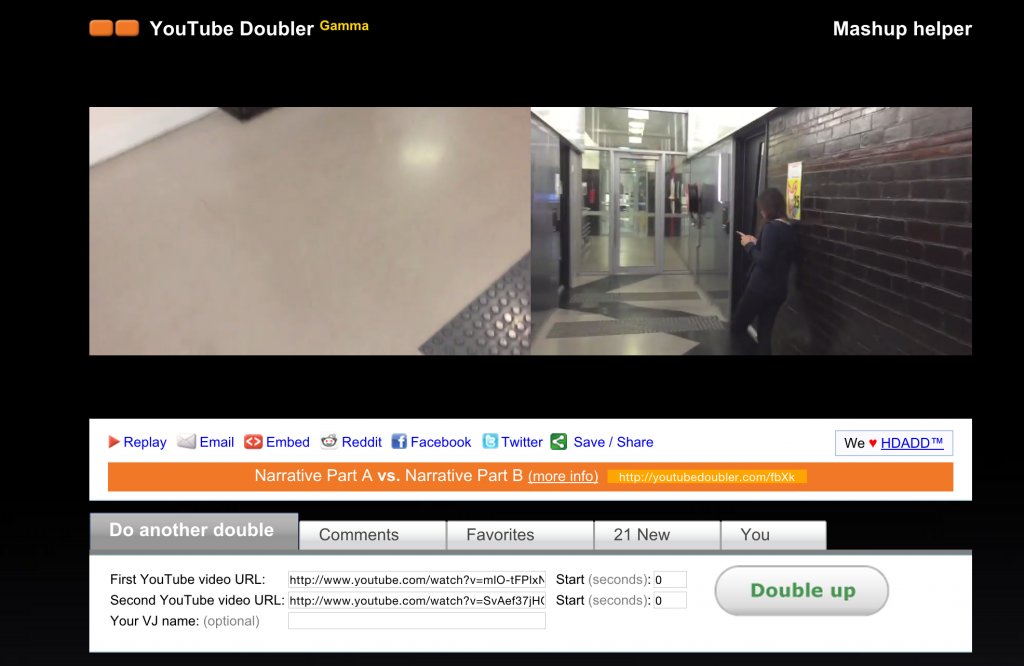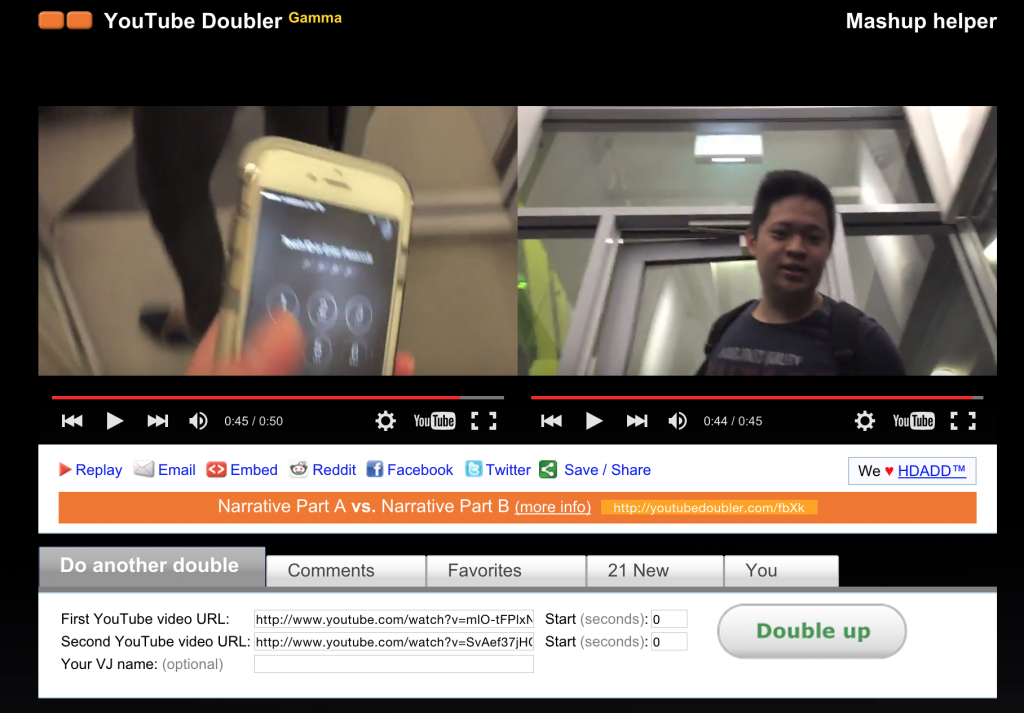Just to get some facts down and have a copy of it on my blog.
Framework:
– introduce our case study = 89 Steps
– our ideas from Project TWO
– set up First person perspective
– our list of sketches
– show one sketch
– our plans for Project FOUR
YUN:
Our case study is the non-fiction interactive documentary of 89 Steps by Uniondocs who created the interactive short with elements of gamification(?) about Martha’s apartment in the neighbourhood of Brooklyn. The elements that we were genuinely interested in was the non-linear narrative of the location where we had to scroll through the street looking for Martha and you can’t look for her at the first try so you need to go back and forth. I also like the linear structure of ascending the stairs with Martha in real time. If you stop moving, Martha will tell you a story of the neighbourhood and then after a while she will say we have rested long enough and urge us to continue. (*remember to insert pictures of the 89 steps*)
so, with those idea in mind, we had come across an interesting sketch from our project two, which was first person perspective. I liked how the interactive short was all in first person perspective as it allows viewers to put themselves in the narrator’s point of view. It gives a sense of participation when you are in the person’s shoe, observing what they see. we wanted to use this to give a stronger effect on interactivity. In project two, we were not very focused on exploring the narrative and non-narrative structure. This time we wanted to use our different online tools and services available to allow us to create a different angle on interactive online video.
First person perspective re-appropriated through online tools and services
PETER:
Here are a list of the sketches we have done for project three: (put in slide)
Due to time constraints, we will show one of our best sketches: Peter’s Korsakow Non-Narrative
The sketch I will be highlighting is the use of a flash-based interactive film creation tool called Korsakow. Designed for non-programmers to easily input film clips and link them together based on keyword connections, the creators describe Korsakow as a tool to create database films that are interactive and rule based.
In our usage for this sketch, we aimed to create a Korsakow film that highlighted a demonstration of non-narrative structure in first person perspective. Utilising clips that Wei Yun had shot on her journey through the city one afternoon, I generated a korsakow film based on connection by numbered keywords, (e.g.. 1, 2, 3, 4.) The aim above all of this sketch was to test the ability and strengths of Korsakow to demonstrate whether it had an effect on the outcome of the portrayal of this short non-narrative film. I think its fair to say that whatever service you utilise to create a video will have an effect on its portrayal.
PETER:
Future plans, we would go with youtube doubler or korsakow. we enjoyed finding new ways to show interactive videos. the choose-your-adventure style has been overused and we want to try and bring in a new style of interactive video. Hopefully for project four, this new angle of interactivity would be brought to light. We are wanting to develop our portrayal of first person perspective further and hopefully by exploring these services to their maximum we will perhaps





